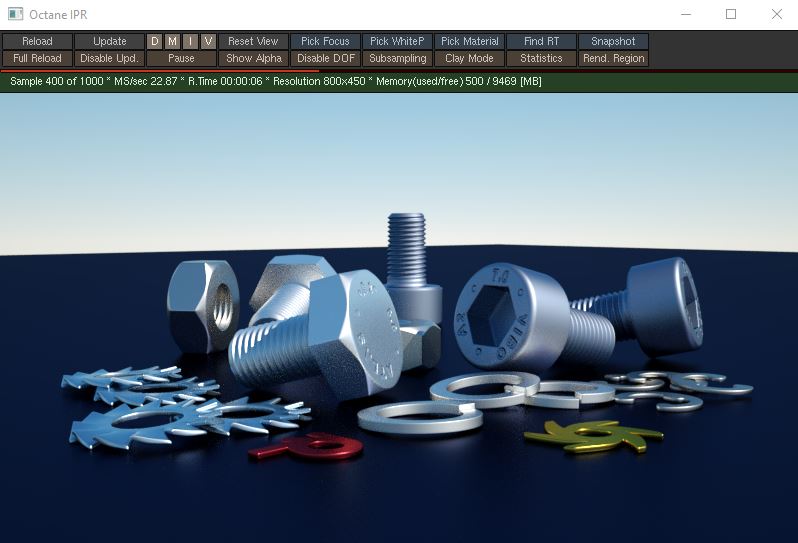
OctaneRender® has a powerful Daylight environment system to simulate real-world illumination that consists of a primary light (sun), indirect light (sky/environment), and atmosphere. This is the default lighting system that is active when you create a Render Target node.

Figure 1: The Daylight Environment rendering using the default settings
The Daylight system is found in the Main tab of the Render Target parameters window (Figure 2).

Figure 2: Accessing the Daylight parameter from the Main tab of a Render Target node
Parameters specific to the Daylight system are found in the DL Environment tab in the Render Target's parameters (Figure 3).

Figure 3: The Daylight Environment parameters
Longitude/Latitude - Make realistic sun settings for a specified geographic location.
Month/Day/GMT Offset/Hour - Place the sun in the sky according to the date/time for the sun at the current longitude/latitude.
Sky Turbidity - The Turbidity can adjust the sharpness of the sun light's shadows. A low value creates sharp shadows like a sunny day, and a higher value diffuses the shadows like a cloudy day.
Power - Adjusts the light strength. This affects the image's overall contrast and exposure level.
Sun Intensity - The scale factor that is applied to the sun only. Use this to adjust the relative power of the sun compared to the sky.
North Offset - Adjusts the scene's North direction. This is useful for architecture visualization to ensure the sun's direction in the scene is accurate.
Daylight Model - Specifies the daylight model to use as the current environment.
Sky Color/Sunset Color - These settings are used by the daylight model to customize the spectral shade of light. This can affect the scene's overall mood.
Sun Size - Controls the sun radius in the Daylight environment.
Ground Color - Base color of the ground which is an infinite plane that is only visible in the final rendering. It serves to produce a horizon line for the Daylight system. This allows the user to control the color of the infinite ground plane associated with the Sun Sky systems.
Ground Start Angle - The angle (in degrees) below the horizon where the transition to the ground color starts.
Ground Blend Angle - The angle over which the sky color transitions to the ground color.
Importance Sampling - This toggles the Sky texture's importance sampling, similar to the Texture environment's importance sampling.
Cast Photons - If photon mapping is used, this option casts photons from the bright areas of the scene.
Medium Radius - Adjusts the medium's scale.
Backplate - Generates a cutout rendering where foreground elements are positioned in the scene.
Reflections - Generates the Planetary environment in scene object reflections.
Refractions - Generates the Planetary environment in scene object refractions.
Enable Texture Environment - Activates another tab where you can load an HDRIAn image which presents more than 8 bit per color channel unlike most common image formats. texture map as a Sky texture.
Enable Environment Medium - Activates another tab where Medium parameters can produce atmospheric effects.